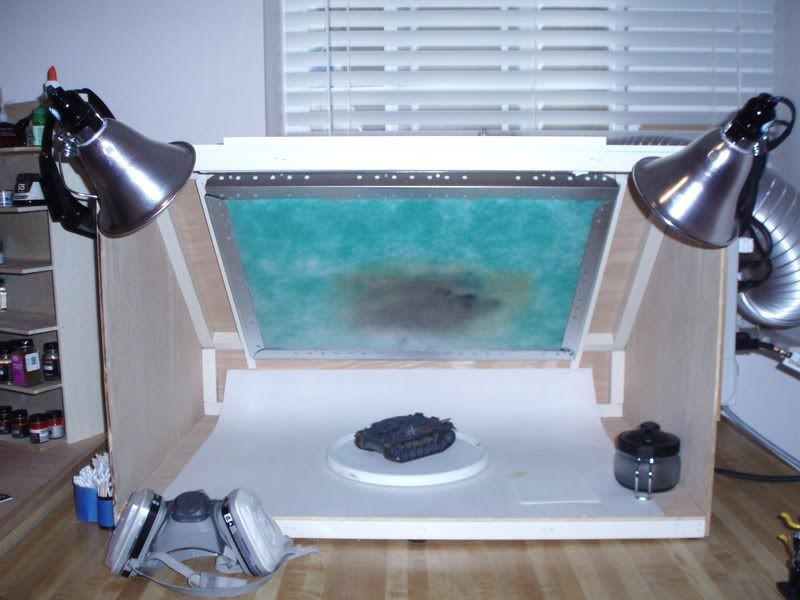I have the large Pace booth, for about 2 years now…got it when I returned to the hobby. My opinion on the quality of the pace booth has gone down the more I use it for the following reasons:
1 - As mentioned earlier, air flow is underpowered… I do get backflow at times. I AB enamels, always have my mask on anyways.
2 - Cheap construction - I am sorry, but the workmanship is amateur at best… the sheet metal is really flimsy, easily bends. The light fixture is shoddily designed and put together.
- Speaking of the light fixture, the location is all wrong… and the bulbs so close to the sheet metal that it will make it VERY hot in just a few minutes (you WILL burn your hand if you place it on top of the booth on the location of the light fixture). I changed the bulbs to the white type. In the winter, I swith back to heat up the hood enclosure a bit (booth in an unheated attached garage).
4 - If I had the handyman know how, I would add source of light to the back of the hood , and/or sides.
5 - Filter -yes, its cheaper… but… I wonder how much it “catches” at times, since it only covers half the back-area of the hood. And it has a tendency to 'slide over" and leave the exhaust opening without filter covering. Again, lazy workmanship, you should be able to design something to hold the filter in place.
Does it work for me? yes I guess… would I buy the same brand again? probably not…
Artograph better? who knows… the bit of research I did, in order to get a REAL OSHA-type good fume hood, you would have to spend some serious casg ($2,000 or so) to get an 'artist-grade" hood.
Do I recomend a Pace booth? With many reservations… not a BAd product, but not the panacea that some people make it to be… I guess the bad workmanship gets to me, specially the light fixture.
I DO like the extra switches and outlets, can control the compressor from the hood, no need to bend down or reach for the compressor switch.





 I hope that this helps.
I hope that this helps.